chinese Shadow Puppets - a Fabulous Ancient Art Form of Theatre in China
Table of Contents
- 1. How the shadow puppeteer works?
- 2. Chinese shadow puppet history
- 3. Schools of Chinese shadow play art
- 4. Famous Chinese Chinese shadow puppets
- 5. How to make a silhouette figure of Chinese shadow puppetry
- 6. Where to see Chinese shadow puppetry plays in China
For most of the travelers, getting to know local traditions, art and culture is a huge part of the worldwide travel experience, especially the various enchanted folk arts. Chinese shadow play or Chinese shadow puppetry (in Chinese: 皮影戏pí yǐng xì, 影子戏 yǐng zi xì, 灯影戏, dēng yǐng xì) known as a very old form of theatre in China, is such kind of folk art that is acted by nifty silhouette figures made from leather or paper, accompanied by quaint old-world percussion and string music and singing, and tells an assortment of tales and stories. An authentic yet wonderful shadow play will offer a special China cultural travel experience to remember!
In 2011, chinese shadow puppet was included in the UNESCO Intangible Cultural Heritage List.
In December 2018, the General Office of the Ministry of Education announced that Shanghai Theatre Academy was the base for the inheritance of Chinese shadow puppetry.
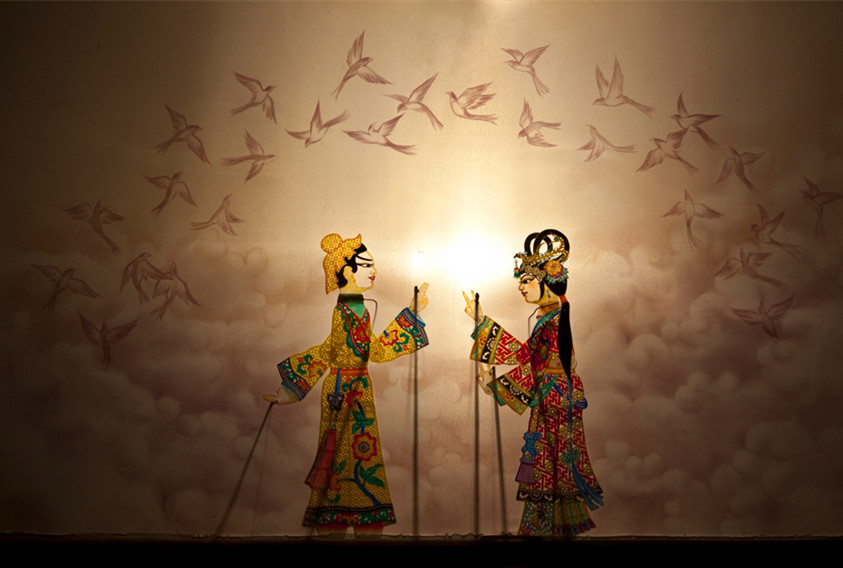
How the shadow puppeteer works?
chinese shadow puppet was traditionally an evening entertainment, when there was no big flat-screen TV. People would entertain themselves with a simple shadow play and indulged in the lingering or adventurous stories. It is operated by puppeteers with their hands by using rods. A lamp illuminates a translucent cloth screen from behind, then the little figures create the illusion of moving images on the screen. Of course percussion and strings music and singing are added. Chinese shadow plays can be performed by large troupes with seven to nine performers, or smaller troupes of two to five people. This humble folk art form of the Han nationality is very popular in rural areas in Henan, Shanxi, Shaanxi and Gansu provinces.
The performing skills and singing skills are the key to the success of a shadow play. The exercises and singing are all dictated by master and have to be studied hard for a long time. In the performance, the artists have the ability to manipulate the movie, musical instruments and accompaniment to make do with the voice and singing at the same time. Some a shadow play master can play seven or eight actors at the same time.
Shadow puppet plays an important cultural significance in China traditional folk art. This theatrical performances somewhat created ancient cartoons of China. Unfortunately, shadow puppetry shows face extinction today, and require more attention!
Chinese shadow puppet history
Shadow puppetry is an ancient traditional folk art in China. Old Beijingers always call it "Donkey Shadow Puppetry". According to historical records, shadow puppetry began in the Western Han Dynasty, flourished in the Tang Dynasty, flourished in the Qing Dynasty, and spread to West Asia and Europe during the Yuan Dynasty.
The shadow play has its origin from a romantic story of West Han Dynasty more than 2000 years ago, written by the great Chinese historian Sima Qian of Han Dynasty (202 BC - 220 AD). In his story a man named Shaoweng “revived” Wu Emperor’s favorite concubine who had died from illness, by asking Wu Emperor (of Han Dynasty) to sit behind a curtain, watching those “magic practices”.
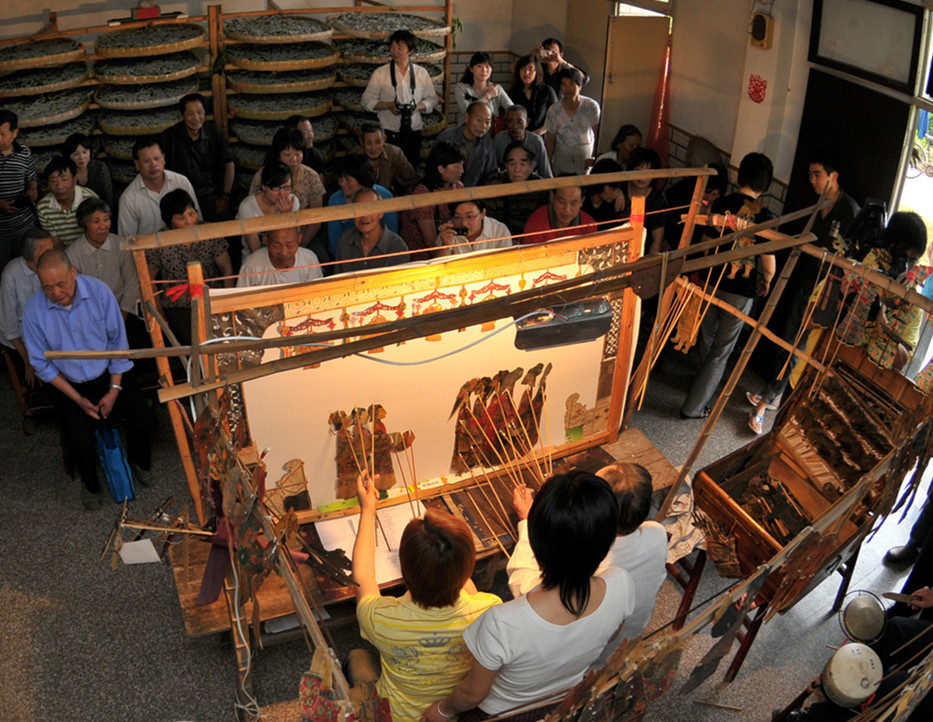
The performance of Chinese shadow puppets came to flourish in Song Dynasty (960 AD - 1279 AD), and gradually spread to the West world in the 13th century when Mongols conquered China. At that time, Chinese shadow play art has been introduced to Persia (Iran), Arabia, Turkey, Siam (Thailand), Burma, Malay Islands, Japan, Britain, France, Germany, Italy, Russia and other Asian and European countries along with military expeditions and sea and land exchanges.
In the third year of Emperor Ming Wuzong (1508), Beijing held a hundred opera conference, shadow play was one of them and participated in the performance. In addition, shadow puppets were spread from Lanzhou and Huating to Zhuozhou, Hebei Province, and then to the western and northern suburbs of Beijing, and then into the city and formed two schools – the West School and the East School.
From the early Qing Dynasty to the early Republic of China, Chinese shadow puppets art reached its heyday. A lot of officials and rich families were proud of their private shadow play troupes and the shadow puppetry figures engraved by famous masters. In folk villages and towns, shadow puppet troupes of all sizes can be found everywhere. It was not surprising that there are twenty or thirty shadow puppet troupes in one town or one city. From the traditional festivals (e.g. Spring Festival, Mid-autumn Festival), to harvest, worship, wedding banquet and birthday celebration, the shadow play was a must. At the Temple Fair of Beijing, there were sometimes sever shadow puppet troupes competed.
In the late Qing Dynasty, some local officials were afraid of gathering masses in the dark places of shadow puppetry, so they banned the performance of shadow play and even arrested shadow play artists. During the China "Cultural Revolution" from 1966 to 1976, the shadow play art suffered from the bad luck of "breaking the Four Olds" again, and it was badly damaged.
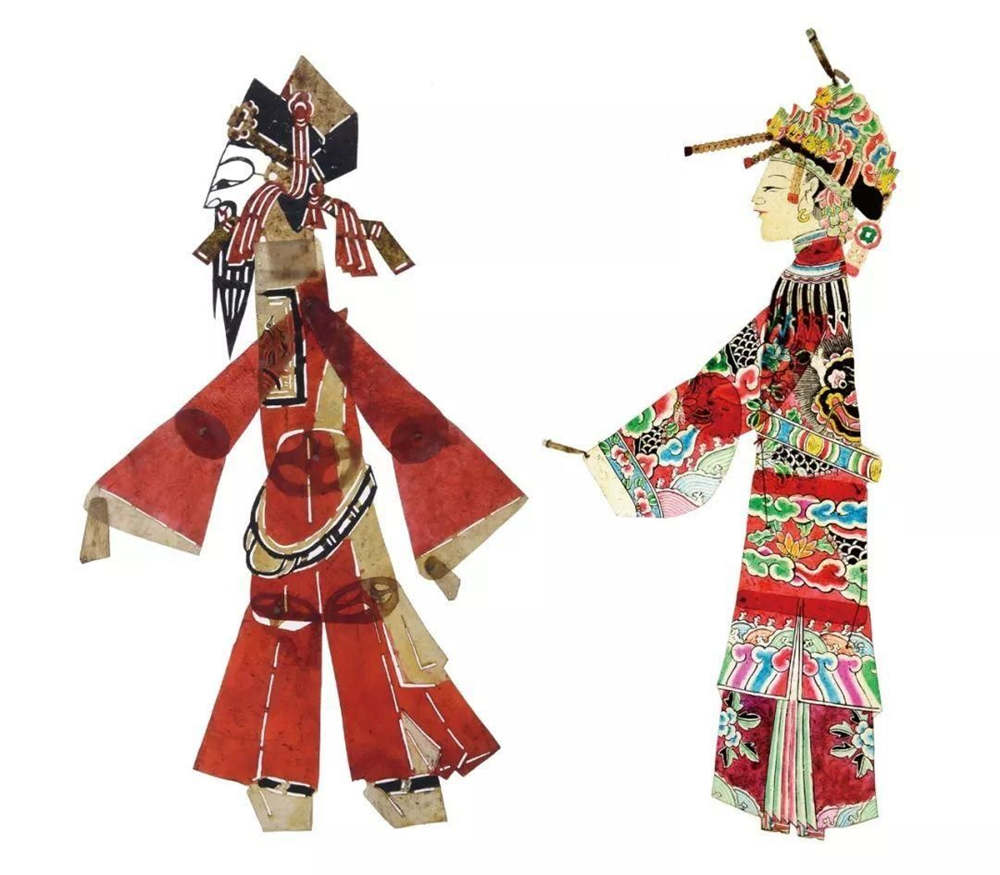
Schools of Chinese shadow play art
During the long-term evolution of Chinese shadow puppetry in different regions of China, different schools formed, such as Sichuan shadow play, Hubei shadow play, human puppet shadow play, Beijing shadow play, Tangshan shadow play, Shandong shadow play, Shanxi shadow play, Qinghai shadow play and Ningxia shadow play, Shaanxi shadow play, Longdong shadow play, and Chuanbei shadow play, each with distinctive features. The musical singing style and rhythm of shadow puppets in different places have absorbed the essence of their local opera, folk art, folk tune and music system.
Famous Chinese Chinese shadow puppets
The performances of Chinese shadow puppetry include historical romance drama, folk legend drama, martial arts drama, love story drama, mythological fable drama, modern fashion drama and so on. There are numerous repertoires of highlights of a play, single play and play series.
The most famous Chinese shadow puppet plays include the Legend of the White Snake, Picking Up Jade Bracelets, the Romance of the West Chamber, the Legend of Qin Xianglian, the Cowhand and the Weaver Girl, the General of Yang Family, the Legend of Yue Fei, the Legend of the Water Margin, the Romance of the Three Kingdoms, the Journey to the West, the Legend of the Gods, etc.
From the revolutionary war period to the liberation, the newly developed fashion shadow play, modern shadow play, and fairy tale and fable shadow plays include the White-haired Girl, Liu Hulan, Xiao Erhei's Marriage, Little Son-in-law, Lin Hai and Snow Field, Red Lantern, Turtle and Crane, Two Friends, Mr. Dongguo, etc.
How to make a silhouette figure of Chinese shadow puppetry
Shadow play was very popular in China. They are Peking shadow puppetry, Chuan shadow puppetry, Shannxi shadow puppetry and others, each with their own characteristics. Yet, the making methods of silhouette figures are almost the same. There are generally 8 steps, with over 3000 carving process. The artistic creativity of shadow play has drawn on the techniques and styles of silk paintings, stone and brick paintings of the Han Dynasty and temple murals of the Tang and Song Dynasties.
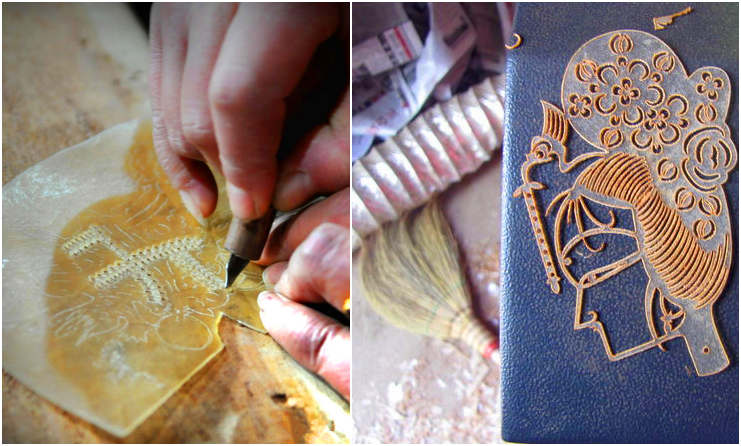
The step-by-step guide on how to make Chinese shadow puppetry
Firstly, pick the appropriate material - the hides of donkeys or oxen.
Secondly, soak the hides in water, remove the hair, meat residue and shave it thin.
Thirdly, draw the outline of the figure. Some of the designs have been handed down from generation to generation.
Fourthly, draft. Use steel needle to copy and depict the outline and design pattern of each component on the leather surface.
Fifthly, carve. There are generally 11 or 12 carving knives of different functions, and sometimes more than 30carving knives.
Sixthly, apply the color. The old artists are very particular about his use of colour. They use purple copper, silver Zhu, Pu Lan and other mineral plants to process a bright red, green and apricot yellow. The method of coloring also varies.
Seventh, Iron the figure into a flat one, which is a key process.
Eighth and finally, string the different parts of the figure together, and make sure each part can move flexibly.
Where to see Chinese shadow puppetry plays in China
Chinese shadow plays can be historical plays, fairy tales, legends, romantic stories, ghost stories, plays of social criticism... Shaanxi shadow puppetry is believed to be the most typical. The Academy Gate Cultural Street in Xian is a nice place for shadow puppets souvenirs of various sizes and colors. A shadow play is highly recommended for China family tours with kids. You can have a shadow play in the following theatres of Xi'an. Just better for you to read the shadow puppet play first to learn the story.
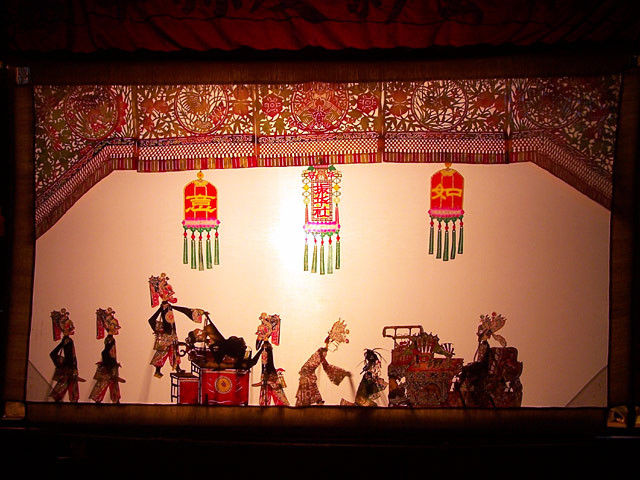
ⅰ. Yi Su Theatre (易俗大剧院) on North Avenue
ⅱ. Gaojia Theatre (高家大院) at the North Gate of Muslim Quarter
Chinese Shadow Play on YouTube depicts the famous story - The Journey to the West
>> Recommended China tours with Chinese shadow puppets show